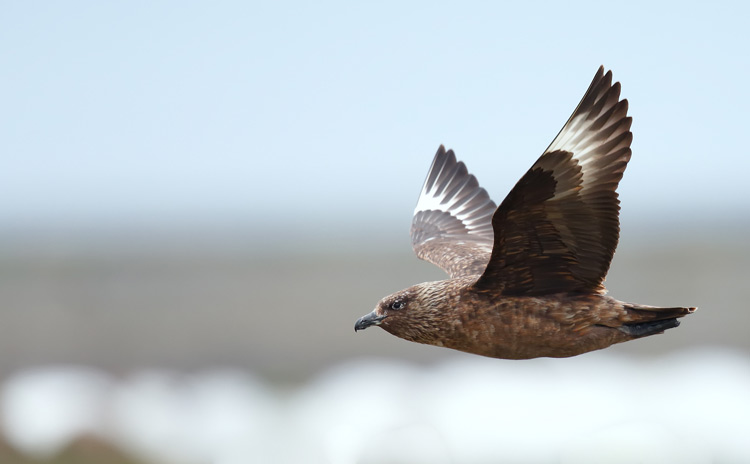Following a meeting of more than 100 experts, a report into the continuing Highly Pathogenic Avian Influenza (HPAI or ‘bird flu’) outbreak has been published by the British Trust for Ornithology (BTO) and Joint Nature Conservation Committee (JNCC).
The report lays bare the impact of the disease on wild birds and identifies knowledge gaps that need to be addressed for the effective conservation of vulnerable species.
It will inform the ongoing response to a disease that continues to have a devastating impact on vulnerable populations of wild birds.
HPAI has caused mass mortalities in the UK’s internationally important wild waterbirds and seabirds since the current outbreak began in October 2021. Across the UK, more than 60 species have been affected, and data collected by the governments’ country conservation bodies, other organisations and volunteers indicates that many more than 20,000 wild birds have died. Especially badly affected species include wintering Barnacle Geese on the Solway Firth, breeding Great Skuas in northern Scotland, and Gannets in colonies around the UK coast. Great Britain and Ireland are home to more than 50% of the world population of both Great Skuas and Gannets, so these impacts are of global significance.
Recognising the global spread of HPAI, JNCC and BTO invited animal health experts, virologists, ecologists and conservation practitioners to a two-day workshop to assess the impact of the disease, discuss management options and identify information needs. The report from the workshop has just been published and can be accessed here (https://www.bto.org/hpai-workshop-report) .

Great Skua, copyright Tony Davison, from the surfbirds galleries
The report identifies three major knowledge gaps which urgently need addressing. First, we need a better understanding of how the virus spreads between individual birds. Second, we need to be able to accurately assess the scale of losses at our internationally important seabird colonies, and finally, we need to determine the best practical approaches to managing and mitigating future outbreaks.
The report also highlights just how well existing monitoring schemes have worked to identify species that have been particularly badly affected. Reports of dead birds carrying uniquely-numbered metal leg rings, for example, have revealed extremely high mortality compared to previous years for seven species: Gannet, Great Skua, Guillemot, Arctic Tern, Sandwich Tern, Kittiwake and Mute Swan. The monitoring of wild bird populations remains critical if we are to fully understand the impact of HPAI and deliver conservation solutions. Seabird experts, including those involved in the national seabird monitoring scheme, the BTO/JNCC Seabird Monitoring Programme, have assessed which species and sites need monitoring in the coming breeding season.
The report also looked at different interventions that could reduce the impact of HPAI on wild birds. This highlighted the removal of carcasses as the intervention most likely effective intervention, particularly for species that pick up the virus through scavenging dead infected birds.
Professor James Pearce-Higgins, BTO Director of Science, said: “Over the last year, bird flu has had an unprecedented impact on wild bird populations in the UK. It is vital to prioritise the monitoring of our wild bird populations, so we can identify and conserve the species that are most at risk. In the longer-term, bird conservationists, virologists and the poultry industry need to work closely together to reduce the risk of transmission between domestic and wild birds.”
Professor Phil Atkinson, BTO Head of International Research, who organised the workshop, said: “Getting input from over a hundred people from the UK and Europe, as well as from Canada and South Africa, really demonstrates what a global problem bird flu is. Wild birds are an unfortunate victim of this global pandemic.”
Dr Helen Baker, Marine Species Team Leader at JNCC, who co-led the workshop, said: “It is important that we work together within the UK, and internationally, to understand the virus, share knowledge and work out how best to adapt conservation solutions to protect and recover vulnerable species. Whilst there may be few interventions that can prevent the spread of bird flu in the short-term, we need to consider longer-term action and where feasible trial new approaches and learn from the results.”